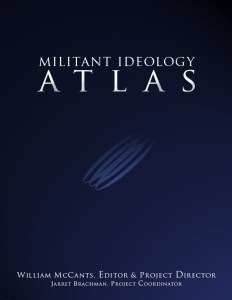The Militant Ideology Atlas identifies the most influential thinkers in the Jihadi Movement and delineates the movement’s key ideological vulnerabilities. It situates the Jihadi Movement within the various Muslim constituencies that Jihadi leaders seek to influence and persuade. Each constituency is responsive to leaders in the broader constituencies of which it is a part, but each also has its own set of thinkers that are best positioned to influence their base.
The largest constituency is comprised of Muslims. This includes Sunnis and Shi’as and ranges from secularists to fundamentalists. The authors assert that Jihadi propaganda, which is designed to reclaim the credibility lost among mainstream Muslims, can be countered with the following messages:
- Jihadis want a totalitarian system of government.
- The Jihadi message is so weak and unappealing that they have to use violence to persuade people.
The next constituency is comprised of Islamists, who differ over the meaning of Islamic law, and the means of achieving its supremacy. Among Sunnis the Muslim Brotherhood is the most influential group in the Islamist constituency, including Yusuf Qaradawi as their spokesman.
Next, Salafis differ over the final form of these states and the proper means for achieving them. The most influential Salafis are Saudi clerics. They are Sunni Muslims who want to establish and govern Islamic states based solely on the Qur’an and the example of the Prophet as understood by the first generations of Muslims close to Muhammad.
Finally, the Jihadis, the holy warriors, are a movement that is part of the larger Salafi Movement. Since Jihadi thinkers draw their legitimacy from the same tradition as Salafis, Salafi scholars are best positioned to discredit the movement among other Salafis. Specific prescriptions for delegitimizing the Jihadi Movement are outlined at the conclusion of this report.
To access this report’s executive summary please click here
 Skip to content
Skip to content

